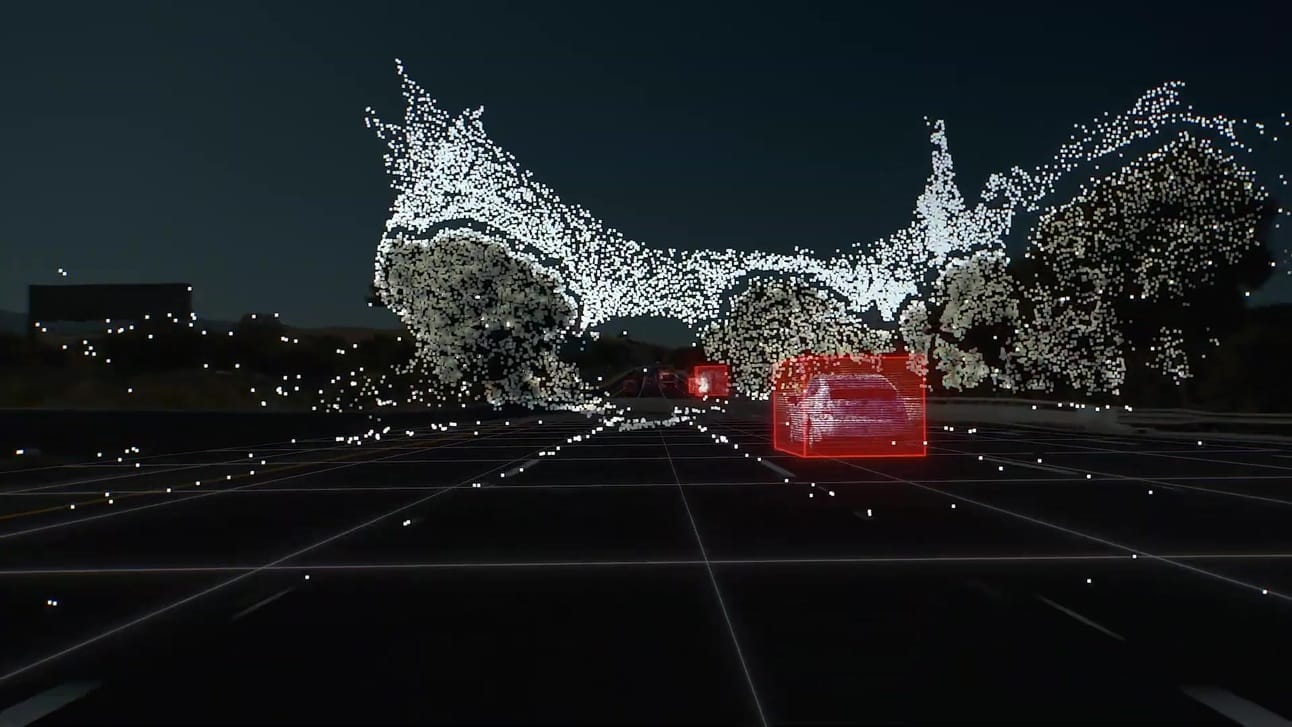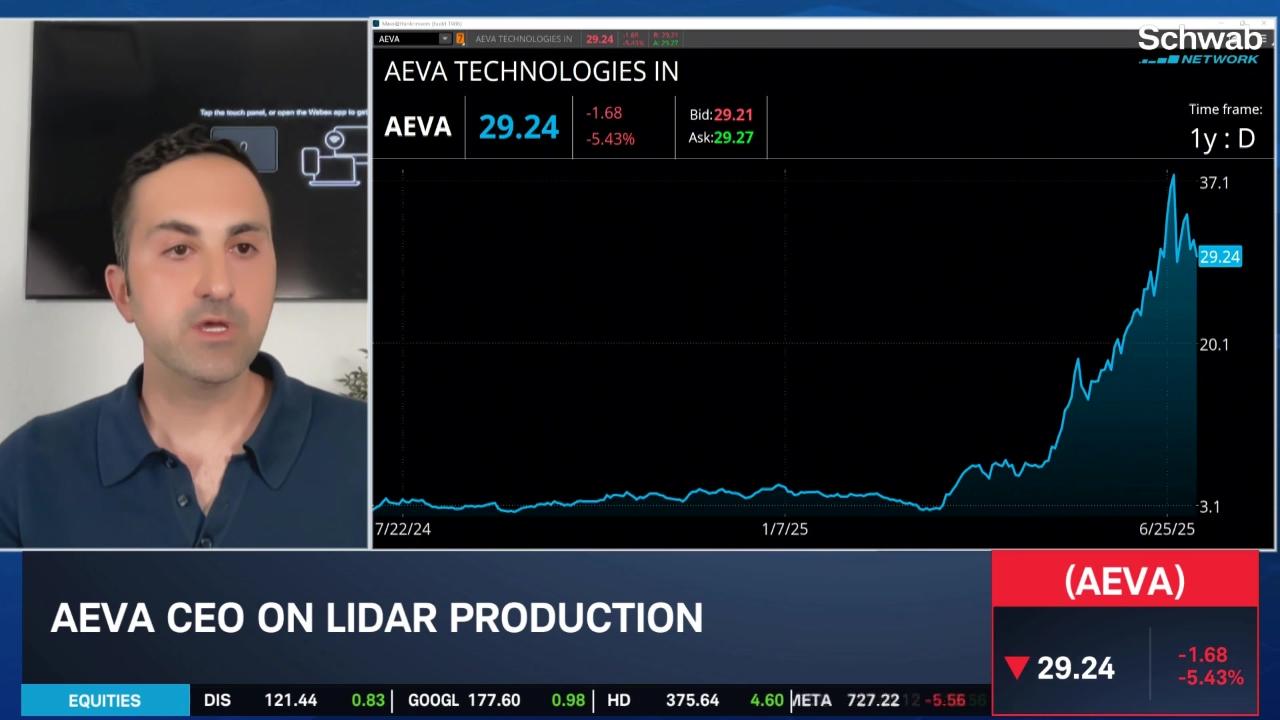- Market Minute
- Posts
- Aeva (AEVA) CEO on the Current Automation Race
Aeva (AEVA) CEO on the Current Automation Race

The CEO of Aeva Technologies (AEVA), Soroush Salehian, joined Market On Close to discuss the company’s LiDAR work and its path forward as the robotics boom continues.
A quick overview: LiDAR is similar to sonar or radar. A LiDAR system maps its surroundings by firing lasers, then measuring the time it takes for the light to bounce back. It has applications from archaeology to oceanography and more. For example, the National Ocean and Atmospheric Administration (NOAA) says LiDAR supports activities like “shoreline mapping, storm surge modeling, emergency response” and more. LiDAR typically uses lasers on the infrared area of the light spectrum, beyond human visibility.
LiDAR for autonomous robots basically allows them to “see.” Robotic sight can be achieved in a variety of ways – Tesla (TSLA) does not use LiDAR or radar for its autonomous vehicle efforts, focusing instead on vision through cameras, though they do utilize it in some test development vehicles. Unlike a camera, though, LiDAR adds depth perception.
Aeva touts “next-generation and perception systems” that “uniquely detect velocity and range simultaneously.” Key perception features it includes for driving are “small object in roadway detection,” “lane lines detection” and “motion estimation.” Salehian brings one of Aeva’s chips to the interview and digs into the complexity demands of self-driving.
Their technology uses Frequency Modulated Continuous Wave (FMCW) technology, which they claim is “ultra long range” and “free from all interference.” Their video example shows a grainy kind of 3D map, with LiDAR highlighting moving vehicles and their speeds, while also showing the locations of road signs, bridges, and the roads themselves.
FMCW basically means what it says on the tin and is used in radar as well. Instead of sending out a bunch of pulses one at a time, like a bat’s echolocation, it sends a continual pulse. Frequency modulation, or the ability to change frequencies within a certain range, allows it to better differentiate objects. You may be familiar with continuous wave radar, aka Doppler radar, which is used by police to detect speeding.
One of FMCW’s strengths is the ability to tell the difference between objects close together, where a camera might make them look as one.
Aeva offers three products right now: Atlas, Atlas Ultra, and Eve 1D. Atlas is meant for autonomous driving and industrial uses (Atlas Ultra is the same but designed to be smaller), while Eve is meant to be used in in-line manufacturing and has “sub-micron range precision.” In the interview, Salehian explains how LiDAR improves manufacturing automation.
A recent customer announcement is Sandia National Laboratories using Aeva technology to enhance security at nuclear reactor sites. The LiDAR devices are meant to detect potential intrusions. The press release says Aeva was chosen because of its ability to detect “hard-to-see waterborne objects” and functionality in “complete darkness.”
Aeva announced in May that it was chosen by an Airbus unit to supply 4D LiDAR for smart automation. It also has a production partnership with Daimler Truck, which Reuters reported it expects to be worth $1B. Other “select partners and investors” include Nvidia (NVDA), Lockheed Martin (LMT), Nikon, NASA, and Porsche.
Turning to the financials, Aeva reported 1Q on May 14 – 2Q is due August 6. Adjusted EPS of -$0.45 and revenue of $3.37 million beat Street estimates. It reported no debt as of March 31. R&D expenses make up a major part of their spending, expending $21.5 million in the quarter. Gross cash use (operating cash flow minus capex) was -$31.3 million. They have an investor day coming up, “Beyond the Beam,” on July 31, where Salehian hopes to release more information about their latest contracts.
Several analysts raised their price targets on the stock in the wake of the 1Q report. However, shares have already outrun some targets, hitting a 52-week high of $38.80 on June 30. It is up over 940% over the last year, and almost 500% year-to-date. It’s fallen off the highs since – and has never recovered to its IPO in March of 2021, where it reached $94.55 its first day of trading.
Watch the CEO interview below:
Video Spotlight
Featured Clip
Tune in live from 8 a.m. to 5 p.m. ET, or anytime, anywhere, on‑demand.
Or stream it via thinkorswim® and thinkorswim Mobile, available through our broker-dealer affiliate, Charles Schwab & Co., Inc
Please do not reply to this email. Replies are not delivered to Schwab Network. For inquiries or comments, please email [email protected].
See how your information is protected with our privacy statement.
Charles Schwab and all third parties mentioned are separate and unaffiliated, and are not responsible for one another's policies, services or opinions. Schwab Network is brought to you by Charles Schwab Media Productions Company (“CSMPC”). CSMPC is a wholly owned subsidiary of The Charles Schwab Corporation and is not a financial advisor, registered investment advisor, broker-dealer, or futures commission merchant.

